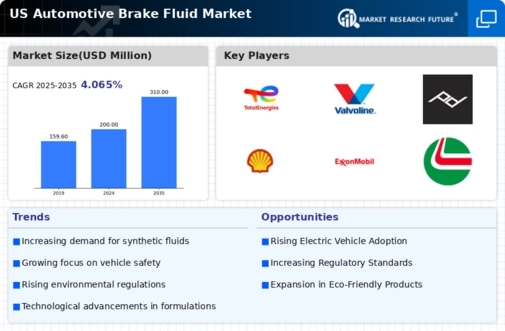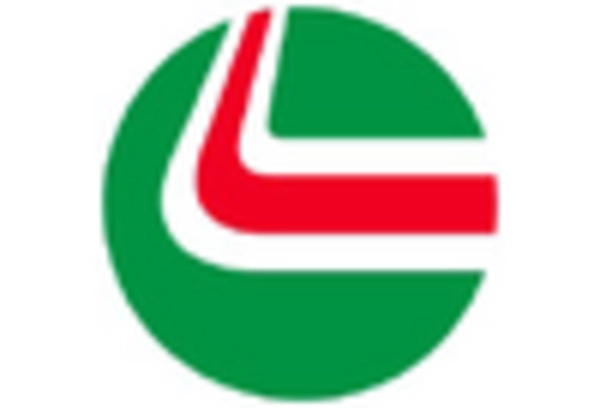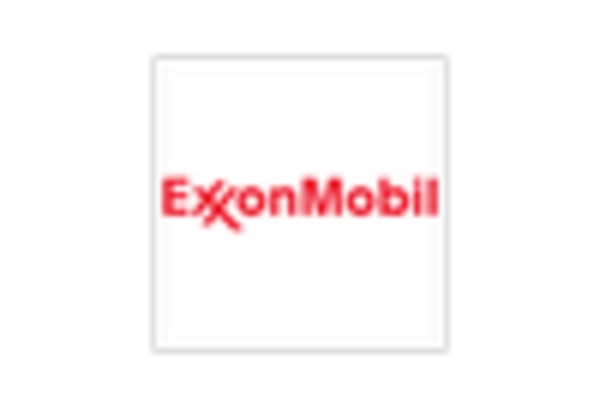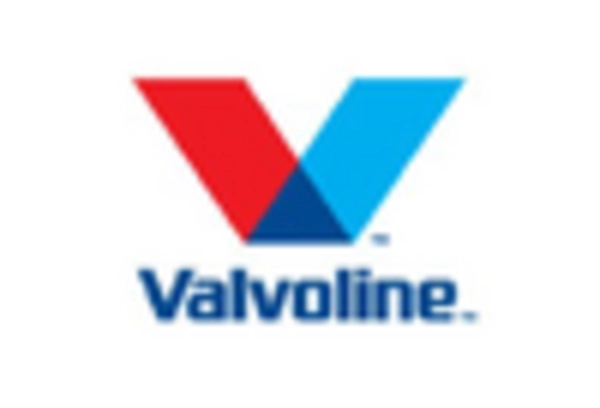Rising Vehicle Production
The automotive brake-fluid market experiences growth driven by the increasing production of vehicles in the US. In recent years, the automotive industry has seen a resurgence, with vehicle production reaching approximately 10 million units annually. This surge in production correlates with a heightened demand for brake fluids, as each vehicle requires a specific type of fluid to ensure optimal braking performance. As manufacturers strive to meet consumer demand, the automotive brake-fluid market is likely to expand, reflecting the overall health of the automotive sector. Furthermore, the introduction of new vehicle models, particularly electric and hybrid vehicles, necessitates the development of specialized brake fluids, further propelling market growth. The automotive brake-fluid market thus stands to benefit from the ongoing trends in vehicle production and innovation.
Expansion of Aftermarket Services
The expansion of aftermarket services is a key driver for the automotive brake-fluid market. As the automotive industry evolves, there is a growing trend towards providing comprehensive maintenance and repair services, which includes brake fluid replacement. The aftermarket segment is projected to account for a substantial share of the overall automotive market, with estimates suggesting it could reach $300 billion by 2026. This growth is attributed to an increasing number of vehicles on the road and a rising preference for cost-effective maintenance solutions. Consequently, the automotive brake-fluid market stands to benefit from this expansion, as service providers seek to offer high-quality brake fluids that meet consumer expectations. Additionally, the rise of online platforms for purchasing automotive products further facilitates access to brake fluids, enhancing market growth opportunities.
Growing Awareness of Vehicle Maintenance
The automotive brake-fluid market is positively impacted by the growing awareness of vehicle maintenance among consumers. As vehicle owners become more informed about the importance of regular maintenance, the demand for quality brake fluids is likely to rise. This trend is evident in the increasing number of consumers opting for professional vehicle servicing, which often includes brake fluid checks and replacements. According to industry reports, approximately 60% of vehicle owners in the US are now aware of the significance of maintaining brake fluid levels for optimal braking performance. This heightened awareness not only drives sales in the automotive brake-fluid market but also encourages manufacturers to promote their products' benefits, thereby fostering a competitive environment. The automotive brake-fluid market is thus positioned to capitalize on this trend, as consumers prioritize safety and performance in their vehicles.
Regulatory Compliance and Safety Standards
The automotive brake-fluid market is significantly influenced by stringent regulatory compliance and safety standards imposed by government agencies in the US. These regulations mandate that all vehicles meet specific safety criteria, including the performance of braking systems. Consequently, manufacturers are compelled to utilize high-quality brake fluids that adhere to these standards, ensuring the safety and reliability of vehicles on the road. The National Highway Traffic Safety Administration (NHTSA) plays a crucial role in establishing these guidelines, which in turn drives demand for compliant brake fluids. As safety concerns continue to rise among consumers, the automotive brake-fluid market is likely to see increased investment in research and development to create fluids that not only meet but exceed regulatory requirements, thereby enhancing overall vehicle safety.
Technological Advancements in Brake Systems
Technological advancements in brake systems are reshaping the automotive brake-fluid market. Innovations such as anti-lock braking systems (ABS) and electronic stability control (ESC) require specialized brake fluids that can withstand higher temperatures and pressures. As vehicles become more sophisticated, the demand for advanced brake fluids that enhance performance and safety is likely to increase. The automotive brake-fluid market is responding to this trend by developing fluids that offer superior thermal stability and corrosion resistance. Additionally, the integration of smart technologies in vehicles necessitates the use of brake fluids that can function effectively under varying conditions. This evolution in brake system technology not only drives demand for high-performance fluids but also encourages manufacturers to invest in research and development, ensuring that the automotive brake-fluid market remains competitive and innovative.

















Leave a Comment